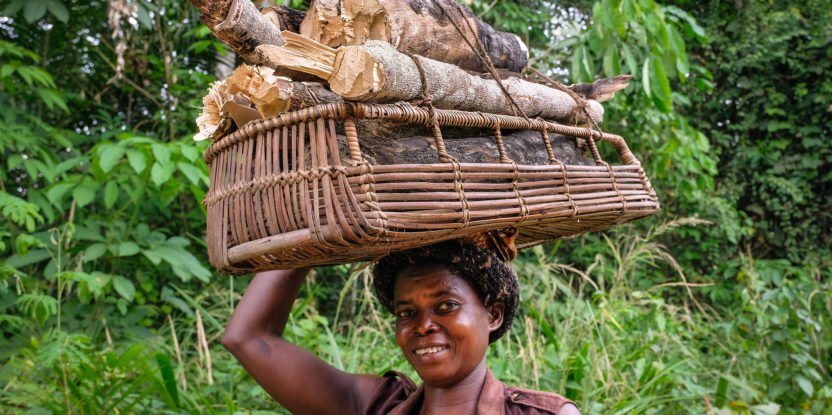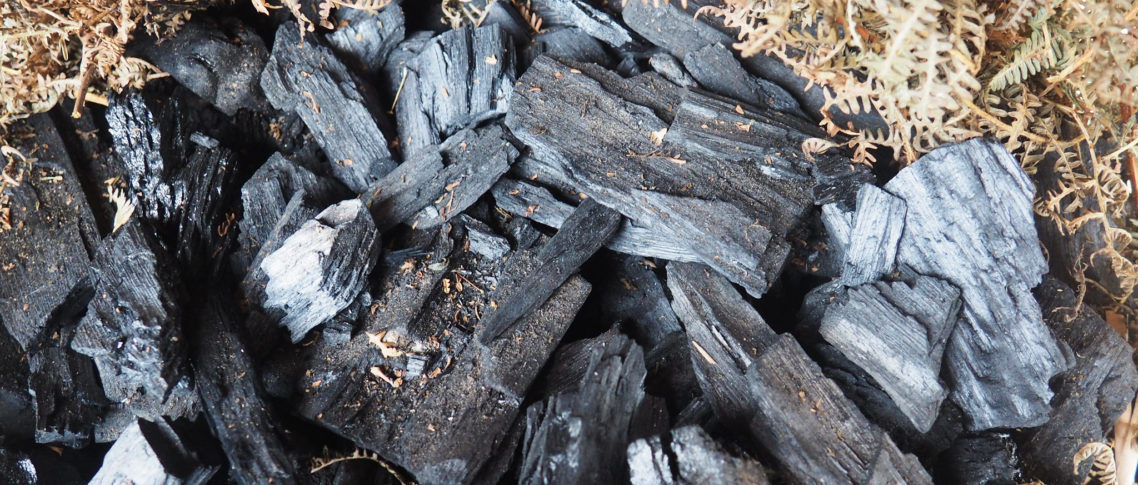
A visit to a home in sub-Saharan Africa, from Namibia to Niger, will likely reveal a common feature: a fireplace or cookstove at the center of domestic life, with women cooking meals in the kitchen or a sheltered area outdoors. Families across the continent eat cooked food and drink boiled water prepared using wood fuel, either in the form of firewood or charcoal, which is becoming increasingly popular.

With a large part of the population without reliable access to electricity or affordable alternatives, wood fuel is the main source of domestic energy in sub-Saharan Africa. Currently, it represents 60 percent of total energy demand for the region. In Cameroon, Democratic Republic of Congo (DRC), Kenya and Zambia, four countries where the Center for International Forestry Research (CIFOR) Governing Multifunctional Landscapes project (GML) is active, from 70 to 90 percent of households and many small businesses rely on wood fuel.
The GML initiative, funded by the European Union, aims to contribute to knowledge, options and to create networks for more sustainable wood fuel value chains.
Lost between energy and forestry policies
Despite its importance, wood fuel is largely overlooked in the continent’s energy agenda. While alternative energy forms, including other biomass energy sources, hydro-power and solar are currently being developed, there are no significant investments to improve wood fuel supply chains.
Wood fuel derives from a variety of tree sources and represents over half of all wood exploitation in African countries. Although most countries have legislative and permit systems to regulate commercial wood fuel exploitation under forest laws, they are often not implemented. This means that wood fuel production and trade remain informal activities prone to illegality, bribery and unsustainable practices.
Tree planting, improved carbonization and cooking initiatives remain isolated endeavors, and most countries do not have dedicated policies.
As my colleague Phosiso Sola from World Agroforestry observed:
“Relevant wood fuel policies provisions in Kenya are spread across several sectors, including agriculture, energy, environment and forestry. However, devolution has shifted mandates and responsibilities from national to county levels. Although this is an opportunity to localize development and expedite implementation of requisite policies, it is faced with challenges of capacity that is needed to guide, control and support sustainable wood fuel production, processing and trade.”
Forest ministries instead focus on wood exploitation from logging and high value timber for export, from which they can get hard currency into the state’s coffers.
Past efforts to manage wood fuel production have often been too isolated or inconsequential to have a significant impact on sustainable sourcing efforts. Wood fuel exploitation has typically been included among the main drivers of deforestation, but it can also be a byproduct of shifting cultivation, commercial logging or tree-farming on private lands.
Fighting unsustainable value chains
Forest degradation and overexploitation in the supply chains of Africa’s cities are an increasingly worrisome issue, especially as these same zones are crucial to food production and other ecosystem services provision for growing urban populations. Although some successful agroforestry schemes exist, which can produce sustainable wood fuel, traditional — and less expensive — practices are still preferred across the value chains.
Informal and quite effective trade of wood fuel to urban markets is organized by rural producers themselves and by networks of traders and vendors in towns. In rural areas, the charcoal trade offers a much-needed source of cash, which is sometimes the only income besides subsistence farming. Therefore, the self-organized and informal character of the trade is not sufficiently controlled and does not link to incentive mechanisms to counter negative environmental impacts of overexploitation of trees and lands.
Charcoal is made in traditional earth kilns, which in theory could be efficient. A producer would need less than 5 kilograms of air-dried wood to obtain one kilogram of charcoal with the proper incentives and training in better practices, such as proper drying of the wood and regular monitoring of the kiln.
However, in practice charcoal-making is sometimes a very inefficient and wasteful practice, with up to 10 kilograms of wood needed for each kilogram of charcoal produced. In many cases, this is due to a lack of skills or because people have to work hastily due to “hidden practices” resulting from illegal personal status or immediate-cash-need working conditions.
On the user side, fuelwood or charcoal is often burned in inefficient, simple cookstoves with detrimental health impacts. New models of improved cookstoves, accompanied by schemes to pay for upfront costs, could potentially contribute to clean cooking, household savings, lower smoke and greenhouse gas emissions.

A new narrative of restoration
The “untapped” potential of wood fuel is gradually being recognized for its potentially renewable character and climate change mitigation options. Energy efficiency policies should be combined with measures to better restore and manage wood fuel supply chains.
Forest landscape restoration initiatives and African country-level commitments to restore forestlands can align well with wood fuel production efforts. In some cases, over-harvesting of firewood can be a direct threat to restoration efforts. Solutions should be designed to address these different needs simultaneously.
For example, CIFOR partner Cameroon Ecology is targeting mangrove landscapes in Cameroon. They work with women fish smokers – the main users of mangrove wood in the country’s coastal areas – to test harvesting techniques to improve the regenerative capacity of mangroves and to reduce their overall wood use by improving fish smoking systems.
Residents of areas where forest landscape restoration is most needed are more likely to contribute to restoration efforts if they perceive pressure on tree sources, claim ownership of the land and can exercise their rights to access any long-term benefits from tree planting. Nearby sources of firewood for domestic use, charcoal making, and practices that can be integrated or beneficial to agriculture activities are key incentives for involving communities in forest management and restoration efforts.
Wood fuel will remain important for cooking. It can be aligned with affordable and renewable energy strategies. Improved cookstoves can help reduce air pollution caused by smoke and related health problems. They can contribute to reducing household expenses for firewood and charcoal.
These solutions for tree and forestland management on the supply side, efficient transformation options and improved cooking solutions also contribute to reducing greenhouse gas emissions and climate change mitigation objectives included in national REDD+ (Reducing Emissions caused by Deforestation and forest Degradation) strategies and Nationally Determined Contributions.
For these solutions to succeed, countries need to aim for integrated wood fuel governance, which considers the local context and actors, as well as decentralized responsible entities, and builds upon what is functioning currently in informal production systems and markets, while integrating incentive mechanisms for more sustainable practices.
We want you to share Forests News content, which is licensed under Creative Commons Attribution-NonCommercial-ShareAlike 4.0 International (CC BY-NC-SA 4.0). This means you are free to redistribute our material for non-commercial purposes. All we ask is that you give Forests News appropriate credit and link to the original Forests News content, indicate if changes were made, and distribute your contributions under the same Creative Commons license. You must notify Forests News if you repost, reprint or reuse our materials by contacting forestsnews@cifor-icraf.org.